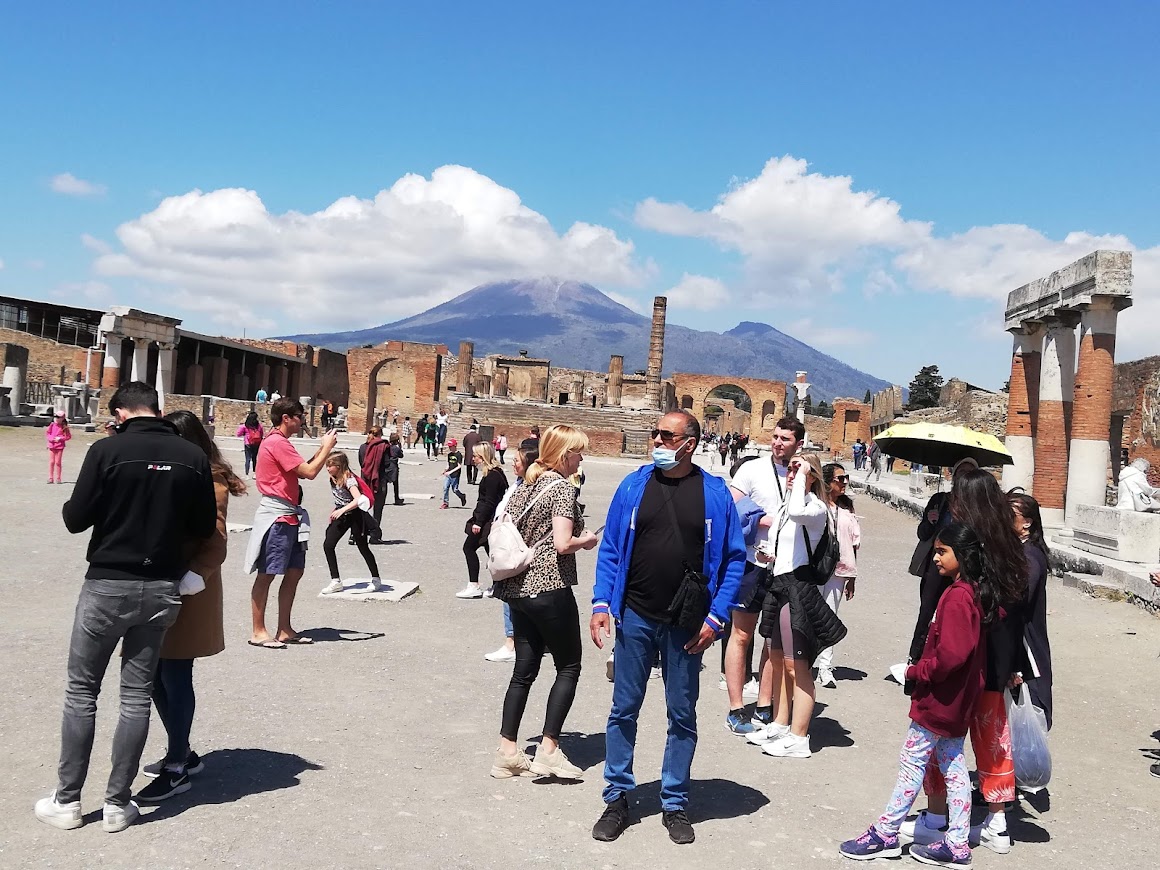Pompeii Ruins, Part 3 -
The Ancient City Pompeii Ruins
"Pompeii ruins - Pompeii Necropolis, the Garden of the Fugitives and the Basilica are some of the must see sights of the ancient city Pompeii history..."
Pompeii Ruins: Pompeii Necropolises
In Roman times, laws prevented burials inside the city walls. That's why, just like in other Roman cities of that time, in the lost city of Pompeii, you will find the tombs lining every road entering the city, apart from the road leaving Porta Marina.
What's really interesting is that, unlike today, when cemeteries are distanced from the living areas and not very frequented, in Roman times cemeteries were bustling with life.
Judging by 180 grafiti found painted and scratched on the tombs of Nocera Gate necropolis, it seems like people really used to hang about the cemeteries in those days.
The grafitti ranged from those advertising upcoming events like gladiator fights or theatre shows to those promoting political campaigns.
In Roman times of Pompeii history, the dead were creamated and the urn was either buried or walled into the tombs that came in different shapes or sizes: chamber tombs, cube tombs, altar-shaped tombs, or sometimes urns were simply marked with a shape of a human bust.
Tombs were often decorated with columns, statues, frescoes, mosaics and other decorative elements.
The most attractive necropolises of the ancient city Pompeii are the ones by Porta Ercolano and the one by the Nocera Gate.
Pompeii Ruins: The Garden of the Fugitives
What used to be just an orchard almost 2 millenia ago is now one of the most frequented spots inside the archaeological site of Pompeii, Italy.
Found at the southeast side of the site, this garden is a spot where you will see on display plaster casts of 13 victims 'frozen' forever in the same posture they were in when they took their last breath, as you can see in our pictures.
The casts were obtained during the excavations in 1961. The hollow spaces left in volcanic debris by decomposing bodies were filled with plaster that eventually became the statues of the largest number of people found in one spot trying to escape the city.
Pompeii Ruins: The Basilica
The basilica of the ancient city Pompeii was one of its most important public buildings. In Roman times, basilicas served as the seat of the judicial system as well as the place where commercial and financial transactions took place, something like a City Hall today.
With Christianity, the architectural plan of the basilica, a rectangular form with rows of columns that divided it into 3 naves, started being used for churches and that is why today many of them are called basilicas.
The Basilica of Pompeii is dated to the end of the 2nd Ct BC and is situated at the southwest corner of the Pompeii Forum.
As the oldest still existing basilica of the Roman world, the remains of Pompeii basilica are a must see!
For Pompeii archaeological ruins street view check here.
Ancient city Pompeii - Pompeii ruins opening hours and admission.
From POMPEII RUINS 3 to Mediterranean Cruise Ports Easy
HOME PAGE
Head on over to the Mediterranean Cruise Ports Easy page on Facebook and become a fan. You will receive notices whenever something new is added to the site and never miss a thing! Feel free to leave comments on the page and interact with other fans, Post your photos and any other links that might interest our visitors too! See you on Facebook! |













